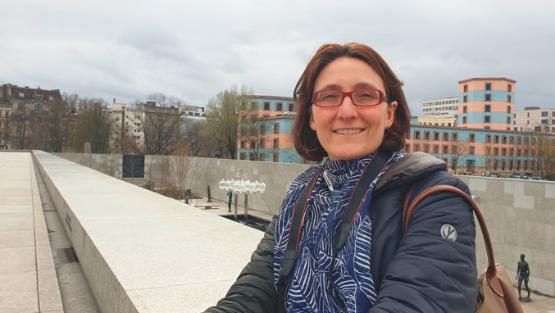University invests £3m in new architecture courses

Students enrolling on the University of Bradford’s new architecture course will benefit from a suite of brand new technology, including the latest Oculus Meta VR headsets and hi-spec PCs.
The University has invested £3m in new facilities and equipment - the courses will have a big emphasis on sustainability and will also involve ensuring students are ready and able to take advantage of the burgeoning online worlds, including the 'metaverse'.
What’s more, all undergraduate students who enrol in 2022 - whether home or international - will benefit from a scholarship - in the form of a £7,500 fee reduction for international students and a £2,000 cash payment for home students (subject to conditions).
Professor Claudia Trillo, pictured below, who will join the University of Bradford in July and will direct the new course from September, says the city has a unique offering for students.
“Bradford has extraordinary potential for regeneration and creativity, it’s not by chance it was named the world’s first UNESCO city of film. There is huge potential, in terms of rebranding the city and looking at its post-industrial heritage in terms of regeneration. I would hope students can be part of that.
“Bradford as a city is also equidistant between London and Edinburgh, so there are many opportunities for students who want to study architecture.
“These are brand new courses, with a huge investment from the University, so students coming here will be in new facilities with new equipment.” Creating a heritage-led strategy for the regeneration of Bradford and reaching out to industry and professional bodies will ensure that students learn the skills they will need to get a job.”
Bradford’s new architecture programmes will give all students a scholarship. A pure 'architecture' programme will be launched in 2023.
Watch the video about the course on YouTube.

The University of Bradford’s new architecture programmes - due to launch in September - will enable students to learn directly from practising architects, work on live design projects and embed rigorous sustainability principles into their designs.
Two new courses - BSc in architectural technology and BEng in architectural engineering – have been developed at the University of Bradford.
Deputy Vice-Chancellor Professor Zahir Irani said: "This investment is part of the University's growth strategy to develop our existing undergraduate portfolio and to also develop new disciplines like architecture."
Architecture in the metaverse
Prof Trillo says architects of the future may end up working in real and virtual worlds, such as the so-called ‘metaverse’.
She says: “Digital architecture is part of the profession, there are already international firms designing and creating virtual on-line buildings and digital twin cities - it’s a dynamic market that is potentially worth billions, so it’s important we ensure students are as well-equipped as they can be in order to take advantage of employment opportunities wherever they may be.”
Where art meets science
Prof Trillo believes architecture acts as a kind of nexus for art and science.
“It’s where imagination meets reality,” she enthuses. “Architecture lies at the centre of this interplay between art and the humanities and science and the technologies. It is neither art nor science but a combination of both. To be a good architect, you need to be creative, to have imagination and flair, to be able to see something that is not yet there, something that does not exist.
“At the same time, in order to make this concept into reality, you need to use the tools of science and you need to ensure the building is functionally sensible and structurally sound.
The Vitruvius Approach
Prof Trillo is an advocate of the ‘Vitruvius approach’, named after the Roman architect Marcus Vitruvius, who espoused a kind of timeless definition of beauty.
Vitruvius believed architecture should follow three core themes: firmitas (strength), utilitas (functionality), and venustas (beauty) - and the latter, he argued, should be influenced by what he called the ‘truth of nature’, that nature's designs were based on universal laws of proportion and symmetry.
Prof Trillo goes one step further.
“Modern architecture must also be sustainable. This means ensuring we use resources sensibly, with a zero-carbon and circular economy approach, and that we create environments that enable people to fulfil their potential. Ultimately, this is about not leaving anyone behind, which is part of our contribution to inclusion.”
Space is political
Prof Trillo says there is an esoteric side to architecture, where space influences behaviour.
“Space is political,” she says. “When we talk about managing a space, we are talking about managing a system of powers. In an age in which we have a dramatic climate emergency, architects have immense responsibility to ensure we remain socially responsible.”
She cites the Royal Institute of British Architects 2030 Climate Challenge, which sets out a series of targets to help architects design within a climate conscious trajectory, and the Architect Registration Board Climate Change and Sustainability Strategy, adding that new architecture course would be aligned with these.
Job prospects
“Our goal as educators is to create graduates whom employers want to employ, and whose skills enable them to take full advantage of the opportunities that exist in architecture and related professions. This means forging close links with industry, ensuring the presence of a strong advisory board, and that students get the chance to experience the workplace first hand. I am also a great believer in the multidisciplinary approach, for example by ensuring students have ‘soft skills’, like being able to present an idea convincingly to a client.”
